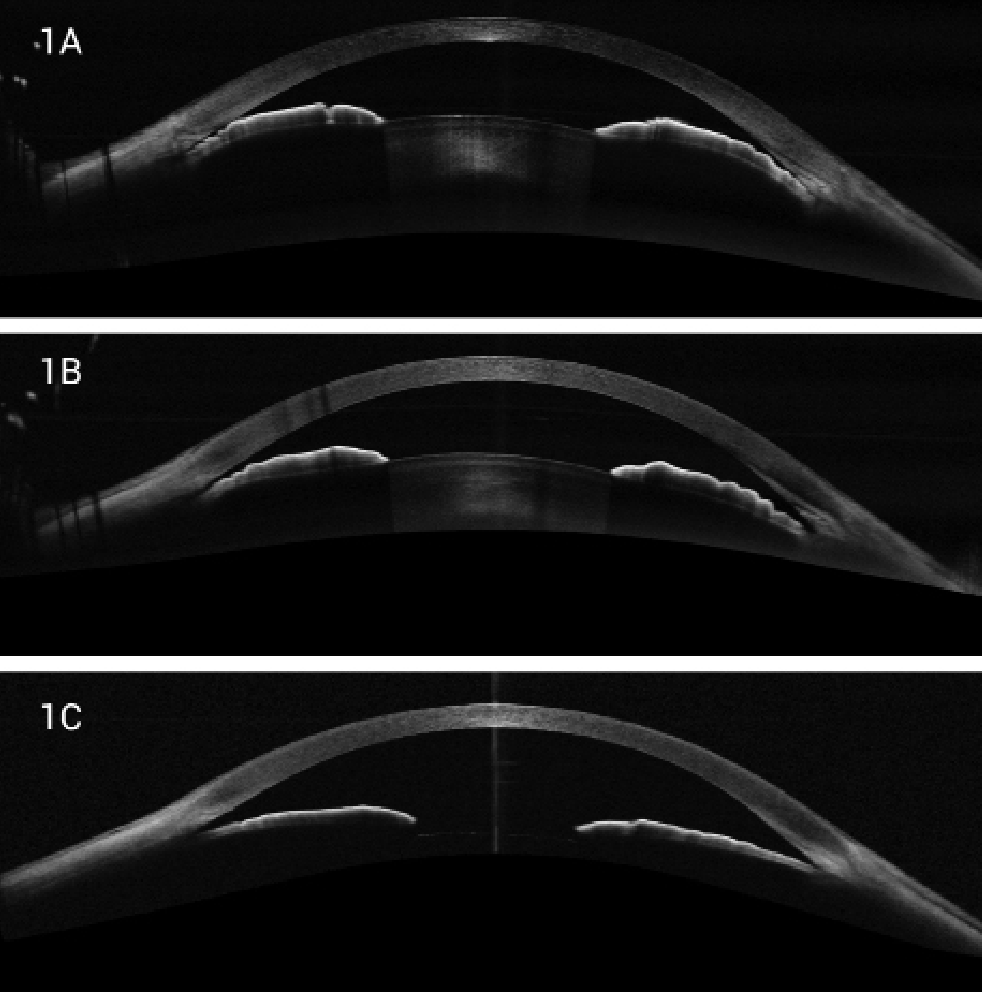 |
|
Researchers found lens thickness to be a predictive factor for the occurrence of primary angle-closure disease, agreeing with prior investigations. Photo: Michael Cymbor, OD, and Emilie Seitz, OD. Click image to enlarge. |
As all eyecare clinicians are aware, prompt management is critical in acute primary angle closure (APAC) to avoid severe visual impairment. A recent study identified several clinical parameters on anterior segment OCT (AS-OCT) that may serve as potential risk indicators of progression in primary angle-closure suspect (PACS) eyes. Its findings are summarized below.
The retrospective study included APAC eyes (n=30) and contralateral PACS eyes (n=30) of 30 patients. Researchers used AS-OCT to assess the differences in anterior segment parameters between APAC and PACS eyes, as this device “offers advantages such as faster scanning speed and built-in programs, allowing for the measurement of average anterior chamber parameters in 360° within seconds,” the researchers explained in their paper, appearing recently in Journal of Ophthalmology. Quantitative measurements of the following were obtained: anterior chamber depth and volume, lens thickness, lens vault, iris-trabecular contact index and iris thickness, volume, curvature and area. The study also analyzed these parameters for potential correlation with intraocular pressure (IOP).
Results showed that, compared to the PACS group, the angle closure group had significantly smaller iris area and iris curvature values, but also significantly larger pupil diameter and iris-trabecular contact index. “This finding aligns with previous research that discovered an interesting phenomenon,” the researchers explained in their paper. “For each 1mm increase in pupil diameter in PACG eyes, there is a loss of 0.145mm2 in iris area in the same eye and a loss of 0.161mm2 in the fellow eye. In other words,” they clarified, “in APAC eyes, due to the dilation of the pupil, there is a corresponding loss in iris area.”
The analysis did not indicate any statistically significant differences in anterior chamber volume, depth, width or area, lens vault, iris volume or iris thickness between the two groups.
Higher IOP was associated with decreased iris volume in APAC eyes during acute attacks; no correlation between these variables was noted in the PACS group. The researchers offered a possible explanation for this finding in their paper: “Iris volume may be reduced as IOP increases as a result of IOP-related iris compression or anterior segment ischemia.”
As for lens thickness, this parameter demonstrated a significant negative correlation with anterior chamber volume, anterior chamber depth and anterior chamber area, while showing a positive correlation with lens vault and nasal iris curvature.
The authors cited the findings of a previous study that coincided with their own, citing that “an increase of 0.01mm in lens thickness was associated with an 11% increase in the occurrence of angle-closure glaucoma.” Furthermore, “a thicker lens implies a larger lens vault, and several population-based studies have demonstrated that a thicker and more anteriorly positioned lens can predict angle closure.”
These findings highlight the value of AS-OCT for assessing and predicting progression of PACS eyes, which may be further validated through future studies with larger cohorts. In the conclusion portion of their paper, the study authors reiterate their primary three findings: “Iris area may serve as a predictive indicator for the progression from PACS to PAC or APAC; a significant negative correlation was found between IOP and iris volume during APAC attacks; and lens thickness can be considered a predictive factor for the occurrence of PACD, in which pupillary block is a key contributing factor.”
Zhao R, Du Q, Wu Y, et al. Analysis of indicators for assessing the risk of progression from PACS to APAC and the degree of intraocular pressure elevation in APAC using AS-OCT. J Ophthalmol. September 5, 2024. [Epub ahead of print]. |


